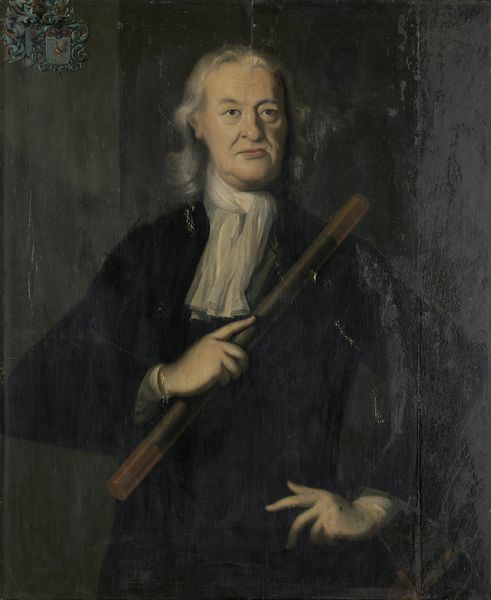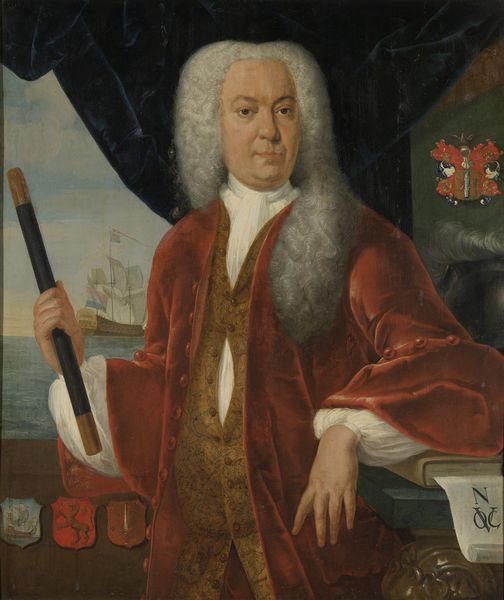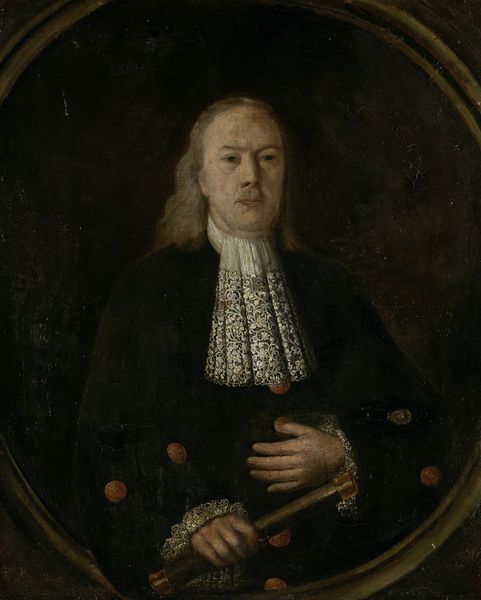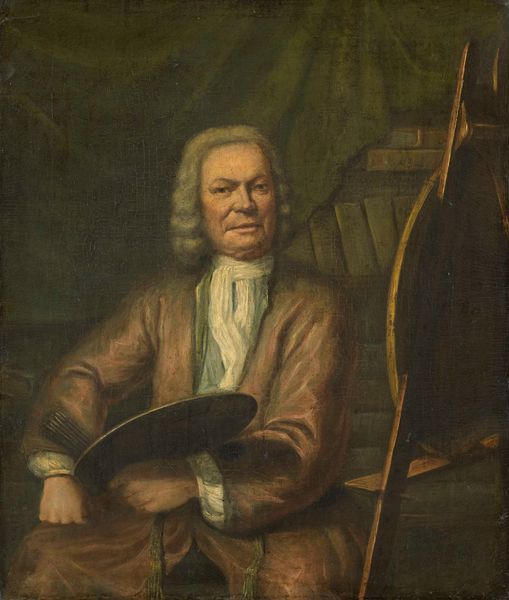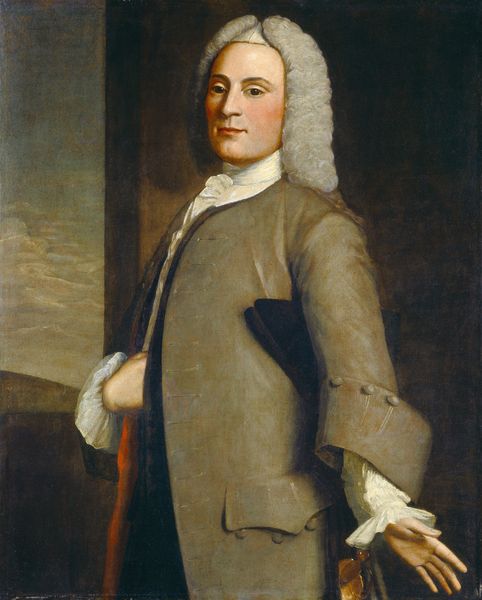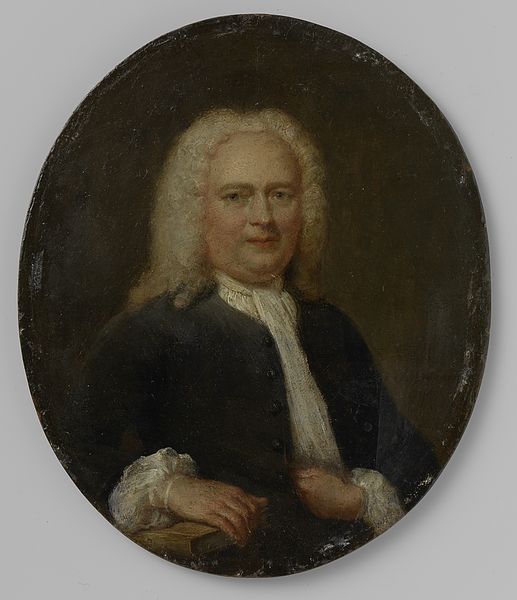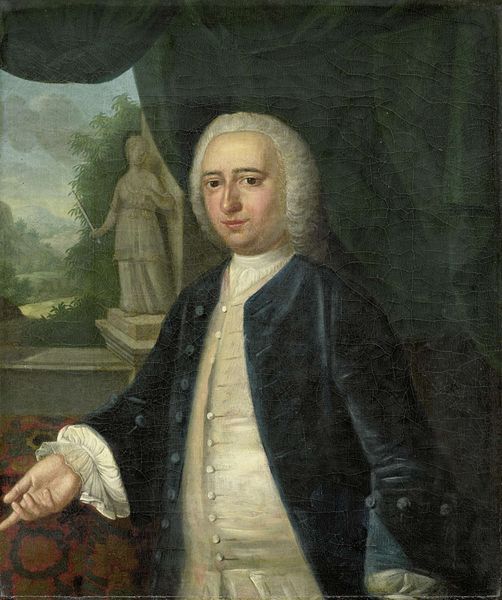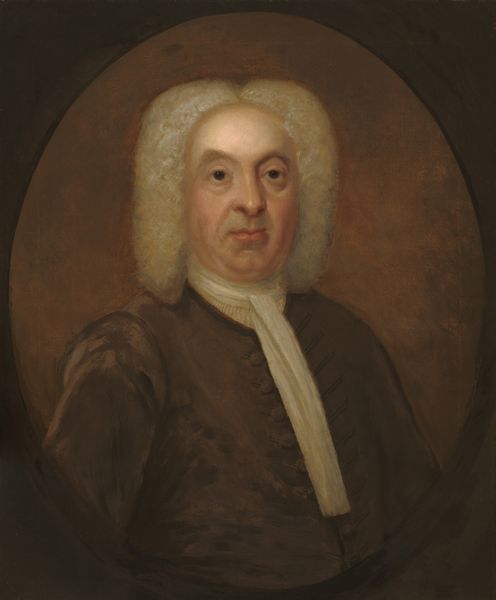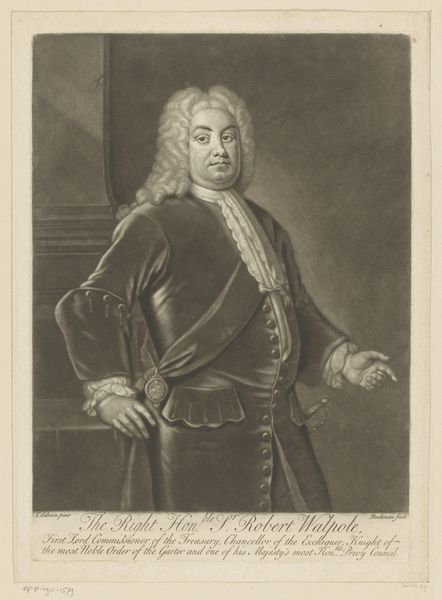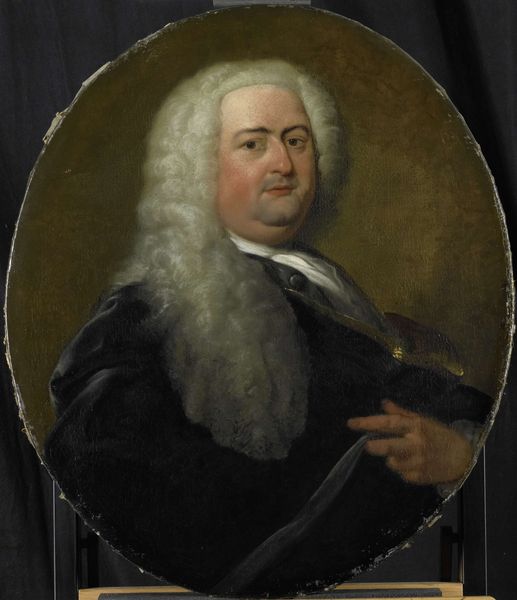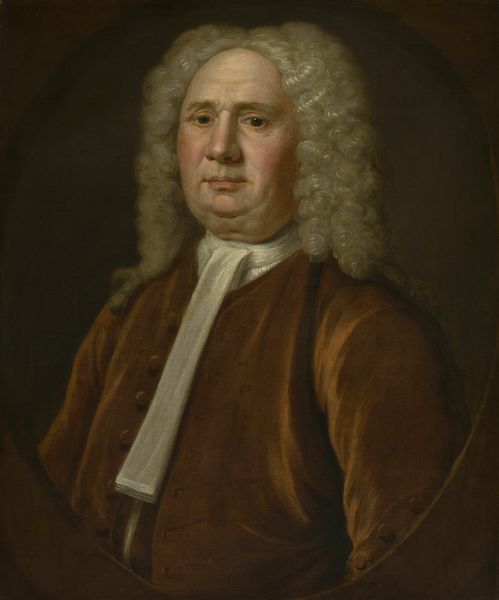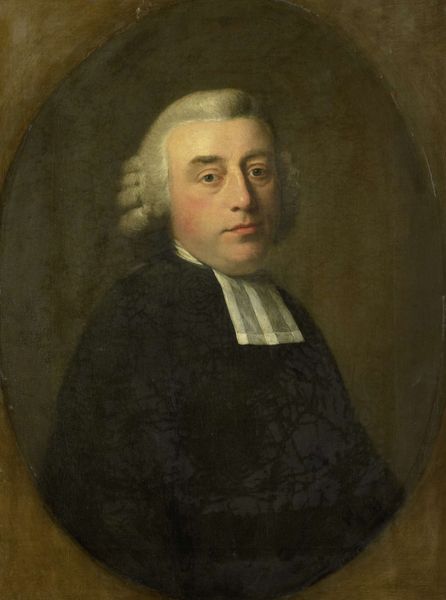
painting, oil-paint
#
portrait
#
character portrait
#
baroque
#
painting
#
oil-paint
#
genre-painting
#
history-painting
#
academic-art
Dimensions: height 107.5 cm, width 91 cm
Copyright: Rijks Museum: Open Domain
This portrait of Johannes Thedens, painted anonymously between 1741 and 1743, presents us with a figure of authority and status, but it's the walking stick he holds that truly captures our attention. The staff is a profound symbol, echoing through the ages from the scepters of ancient rulers to the staffs of biblical patriarchs. It represents power, guidance, and support, acting as both a physical aid and a signifier of leadership. Think of Moses, whose staff parted the Red Sea, or the shepherd's crook, symbolizing care and dominion over a flock. Yet, the walking stick has also appeared in more humble guises, as a symbol of pilgrimage or wanderlust. This duality enriches its significance. It demonstrates a journey through life, embodying both the burdens and the authority one accumulates along the way. The subconscious appeal of this archetype lies in its embodiment of control, direction, and the ever-present human need for support. This symbol resurfaces, evolves, and takes on new meanings, its cyclical progression reminding us of its enduring relevance throughout different historical contexts.
Comments
rijksmuseum about 2 years ago
⋮
The highest-ranking Dutch East India Company (VOC) official in Asia was the governor-general. He presided in the Castle of Batavia (now Jakarta, Indonesia), a fort built by the Dutch. The assembly hall in the Castle of Batavia was the centre of Dutch power in Asia. The walls were hung with portraits of all of the governors-general. Most of the 18th-century examples shown here were painted in Asia, often by anony¬mous artists.
Join the conversation
Join millions of artists and users on Artera today and experience the ultimate creative platform.
